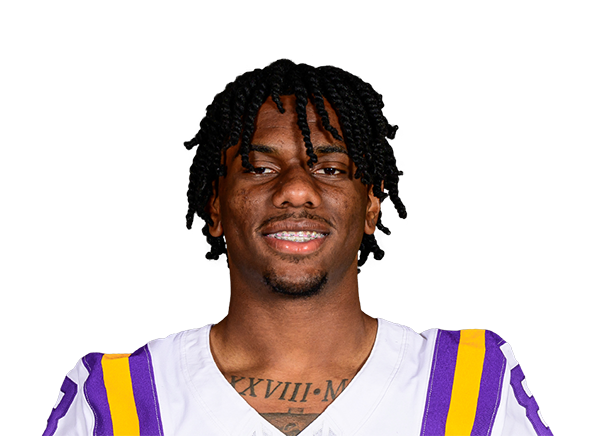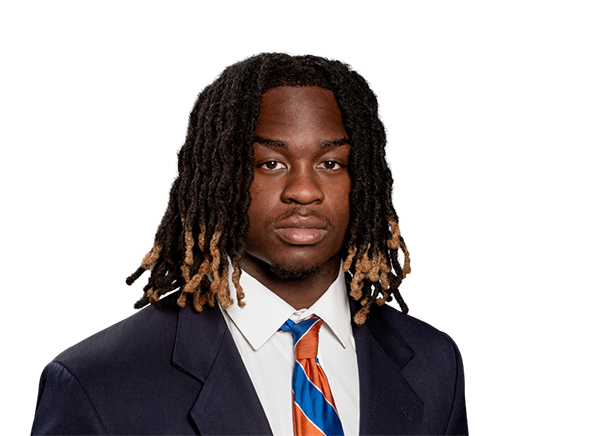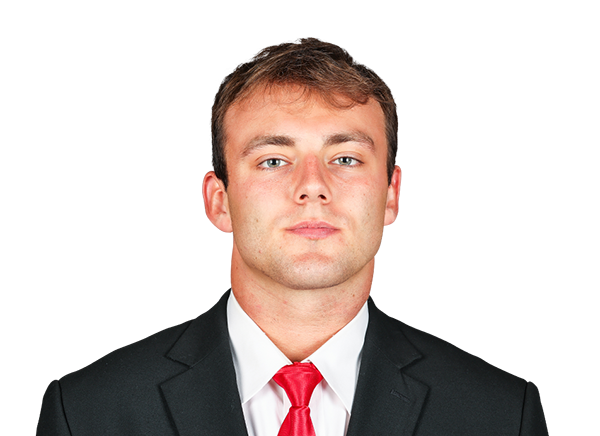When valuing players, it’s essential to use a dollar (or point) value. Without it, there is no clear way to analyze players’ differences. Folks will refer to pick value (ex: pick 7.01), but I am not sure what that means when comparing players to determine the value needed to even out a trade. There are a lot of trade calculators out there, which are generally going to be helpful tools. However, none of them calculate values to our specific league’s configuration. For example, should a player be worth the same in a start eight vs. a start twelve league? For this reason, I use a process that harkens back decades from the brainchild of the legendary Bill James. Value above replacement (VAR) style calculations will determine customized player values tailored to each league.
Customize to Your League Settings
As a point of reference, I will leverage a 12-team non-Superflex half-point PPR format with 1QB, 2RB, 2WR, 1TE, and three Flex which I will refer to as “start nine.” To determine each player’s current year value or redraft value, I leverage current year projections based on five sources and use the median fantasy point projection to assign per player based on my league settings. I use projections rather than fantasy points or rankings because this allows me to customize the same data set of projections to various league formats. For example, if a passing TD is worth six pts. I can use the same set of projections in one league and four in another but arrive at different fantasy point totals for each league’s settings.
Using this process, we now have a customized fantasy point total for every player for each league format. Note that a league manager using this same approach will arrive at a different player value as they will undoubtedly use different projection sources. For this reason, finding the most reliable projections will be advantageous before moving forward. I leverage multiple sources to get a “wisdom of the crowds” consensus projection.
Below is an example of the projections from one source and the league values at the top in green to create a customized projection point total.
Value Above Replacement
We want to ascertain a value for each player above a certain replacement level. My preferred method is to calculate two different values, a starter-only value and a reserve value which doubles the starter positions. In this case, the starter-only value will use the 13th QB’s fantasy point projection as the zero-value player. The reserve value will use the 25th QB’s fantasy point projection as the zero-dollar value player. We typically perform this analysis for each position except for RB and WR. Due to the many flex spots, we will combine these two positions. In this case, we would use the 85th RB/WR as the starter zero value (seven starting roster spots times twelve teams plus one) and 169 for reserve value (fourteen roster spots times twelve teams plus one).
Below is an example of the starter and reserve points above replacement calculation. Before performing this calculation, I would first create a median projected fantasy point total for each player based on all of my source data.
Converting Value to Dollars
We now have a fantasy point value above the zero value for each player. The sum of all players and positions is the total VAR based on the level chosen. This will differ between the starter vs. reserve system we are calculating in parallel. I base my model on a 12-team league with $300 of startup auction value. We can decide on any amount to suit our league settings. In my example, this equates to a $3,600 economy for the league.
Let’s say the total value for starters was 7,200 fantasy points above replacement and 14,400 for reserve. In this case, each fantasy point above replacement would equate to 50 cents for a starter (3600/7200) and 25 cents for a reserve (3600/14400). If a player was calculated to have 20 fantasy starter points above replacement and 50 reserve points above replacement, he would equate to a value of $10 as a starter (50 cents times 20 points) and $12.50 as a reserve (25 cents times 50 points). I like to use dollars since it coincides with the auction startup draft. However, we can maintain points above replacement and stop there.
Example:
Above is an example of the starter and reserve dollar VAR calculation using the arbitrary 50-cent starter and 25-cent reserve calculation. We can derive the correct value using the guidance above, but we will continue with these numbers for ease. Note that this would include all positions, but for reference, I am only showing QBs.
We now have the starter and reserve value systems calculated, arriving at two separate values for each player. Since the reserve value includes more players, the top-end players’ reserve value will be lower than their starter value. Lower-end players will have higher reserve values than starter values (which would be zero or negative at the bottom).
At this point, it is up to each league manager to determine which method makes the most sense for them or if some ratio of the two is best. We could theoretically value any number of players at each position as it is entirely up to the manager to value depth at each position however he or she chooses. For this reason, two league managers using the same set of projections could arrive at vastly different player valuations that would still be “correct” with a tilt toward how much each values depth and depth at each position.
Calculating Dynasty Value
We now have a list of all players’ redraft values, valuing only the top 108 players (starter value) and 216 (reserve value). To calculate the dynasty value of a player, one would need a career’s worth of projections. I am unaware of any data source that projects past the current year, nor would this data set likely correlate much with reality. So many changes from one year to the next that this data would be unreliable. As such, the valuation technique above is more useful from a redraft perspective. It can also indicate which manager will be most or least competitive in the upcoming year. This helps to value each future rookie draft pick in the hopes of getting them at a discount.
I use the same technique of VAR but instead leverage a point system based on Fantasypros consensus dynasty rankings in place of future projections for dynasty value. I then convert that to a dollar value based on my league settings (positional spots). There is a multitude of ways to derive this objective. I leverage a separate source for this that maintains these Fantasypros point values. We could use KTC point totals or any other trade calculator we like. Various calculators will allow us to convert rankings to auction value if a point system is unavailable. I recommend finding something along these lines or any other method to arrive at a value-based system. We can now ascertain a starter and reserve dynasty value for each player using the same value of depth used for redraft values.
Below are the first few players which indicate the redraft (CY columns) and dynasty value (DP columns) by player for both starter and reserve systems.
League Summary
Below is an example of a league summary based on the values I put together. I determine the player’s starter and reserve dynasty values (positive amounts only) in columns C and D. In column E; I include only the starting roster in redraft value. Column F layers on future pick value. Note that the next article in the valuation series will dive into calculating pick values. Columns G and H value reserve and starter dynasty value, including future rookie picks compared to the average. This allows us to see which teams have higher or lower dynasty values than the league average. A team with high redraft and dynasty values is in great shape (team one). If a team has low redraft and dynasty values, they are in big trouble (team ten).
However, most teams will likely have a mix where it’s clear they are building value through a rebuild or going all in at the expense of future value. If we see a team with high redraft value and low dynasty value, it may be wise to try to acquire their future draft capital in the hopes that they will be in a rebuild by that point. These teams will likely believe their dynasty will continue indefinitely, making it much easier to acquire these picks below their ultimate value. Conversely, if we see a team with low redraft value and high dynasty value, we will want to target their current year picks. However, they undoubtedly will already value those picks high and as a critical part of their rebuild strategy, making these picks unlikely to be acquired at a discount.
Calculating Career-Span
Since age plays such a large role in dynasty, it is helpful to create a career-span calculation. Certain positions can maintain elite seasons longer, so we should adjust for this element. I used pro bowl appearances by age as a reference. I found that RBs will fall off after their age 28 season, WR at 30, TE at 30, and QB at 34.
This can be tricky due to outlier positional ages, with Kelce playing at 32 years old and Brady at 44. A QB can have the greatest deviation as no RBs are playing at a positional equivalent of 38 years old, but we see a QB at 44 (both ten years past their typical career span). We may have mistakenly assumed they had one premier year left in their respective careers for a while now, severely understating their dynasty value. Regardless, some guideline is needed to compare values across positions.
Below is the chart shown previously, including the age and career span remaining based on these assumptions. We can see that the top WRs have longer projected career spans than the RBs.
Arbitraging Mispriced Players
With this system now fully set up, we should have a redraft starter and reserve value (based on projections for the upcoming season), a dynasty starter and reserve value (based on a dynasty ranking or point system), and a career-span remaining calculation based on players current ages and positions. We now want to ascertain mispriced dynasty values and try to arbitrage those values.
The first rule here is that given two players with the same redraft value, the player with the longest career-span left should be more valuable in dynasty than the other player. The second rule that applies here is that given two players with the same career span left, the player with the higher redraft value should be valued higher in dynasty. Suppose either of these two rules is broken. In that case, a trade can extend our team’s cumulative career span or add to the current year’s value without giving up any hypothetical dynasty value.
Below are two players with very similar valuations in both redraft and dynasty. However, we see that the career spans are very different. This could be strong evidence to indicate that Andrews is undervalued and Diggs is overvalued.
Below are two players with very similar career spans and valuations in dynasty. However, we see that the redraft values are somewhat different. This could indicate that Higgins is undervalued and/or Hall is overvalued. This exercise becomes tougher with younger players as their best years are hopefully ahead of them. This future value is baked into their dynasty value, not just next year’s projection.
Where Dynasty Managers Separate Themselves
These two rules are common sense. The heart of dynasty valuation lies in that gray area where career span and redraft value differ between players. How do we determine how much more to value one player over another who is worth twice as much in redraft and has twice as much career span? This simple math leads us to believe the player should be four times as valuable as the other in dynasty leagues. In most cases, it will not be the case in the market. Whether that is the right answer in valuation is open to interpretation. Whether this ratio is one-to-one is unclear. But, an argument can be made as to why it should be.
The deviations begin to blur further typically when we are including younger, unproven players. Their redraft value is understated from where it will likely be a few years later. I believe that a good dynasty value strategy should implement a way to determine where these redraft values deviate from dynasty values that are not explainable by the years left in their career. At this point, it becomes more art than science. The numbers can be our guide, but not the end all be all.
Using the dynasty value system as a basis for trade decisions should be our starting point. We want to ensure we are at least winning the trade based on consensus. From there, we will want to leverage the further understanding of career spans and redraft values as a guide to see if we believe a player has further upside compared to the market. If that is the case, it’s a win-win as both elements of the analysis show it’s a trade likely to work in our favor.
Make sure you subscribe to the #NerdHerd, where you get exclusive content, dynasty/rookie/devy rankings, buy/sell tool, and a bonus podcast too. Dynasty Nerds also recently launched the #DynastyGM tool, a complete game-changer in the fantasy industry. Click here for a free trial. We truly are your one-stop shop for all your fantasy football needs!


















